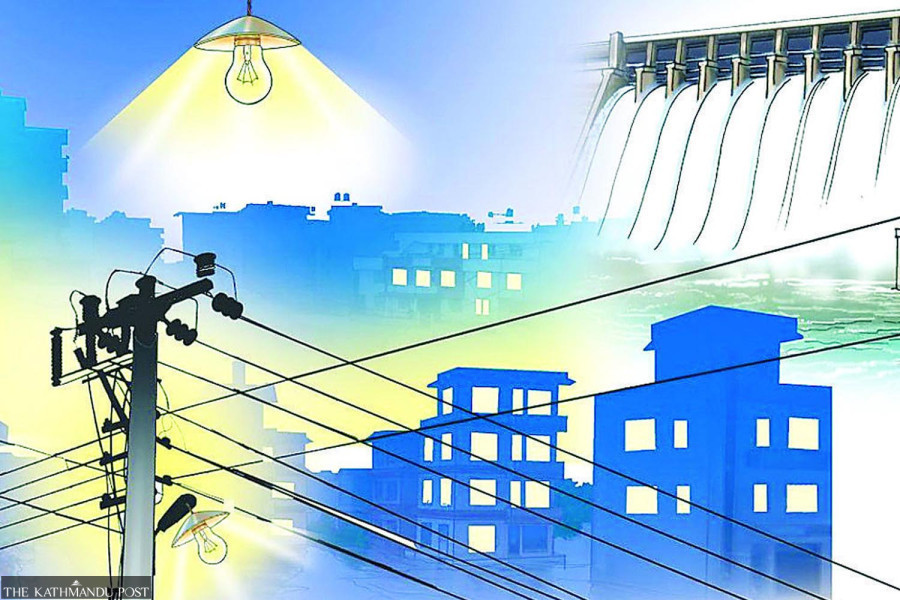Editorial
Clear the road
The many hurdles in our power generation and distribution systems make it hard to export much electricity.
Two days after Nepal and India inked some major deals including an agreement to increase the volume of Nepal’s electricity export to India to 10,000MW in 10 years, officials from the two countries on Saturday reached a number of other agreements on enhancing cross-border electricity transmission capacity. A meeting of the secretary level Joint Steering Committee took various decisions to expedite work of under-construction cross-border lines as well as to upgrade capacity of some existing ones. The bilateral body also ordered the Joint Technical Team to study the feasibility of new high-voltage cross-border transmission lines that will be needed to boost power trade between the two countries. According to officials involved in the negotiations, they have agreed to carry out a study on the possibility of at least three new cross-border power lines.
The JSC’s decisions—that came after the meeting of the Joint Working Group co-chaired by Nepal’s Foreign Minister NP Saud and India's External Affairs Minister S Jaishankar—are timely initiatives to enhance cross-border electricity transmission capacity. Officials working in this field say the first major step towards exporting 10,000 MW of electricity to India in 10 years is to massively increase the capacity of the cross-border lines. Through the existing transmission capacity, we can supply hardly 1,300MW. This highlights the extent of work that needs to be done. While this calls for effort from both the sides, the work on Nepal’s part is disproportionately higher.
The electricity transmission capacity of Nepal has for long been poor. The system of evacuating electricity from hydropower plants isn’t efficient. Protests in transmission line project sites have been a perennial problem. As with other development projects, land acquisition and site clearance are common obstacles for building transmission lines. Obstruction on construction of transmission lines is common too. Officials say this could badly affect the evacuation of power from many under-construction hydroelectric projects. For instance, it took 13 years to complete the 74-km-long Bharatpur-Bardaghat line, which was inaugurated in August last year. Separately, authorities have failed to resolve the long-standing dispute between the Nepal Electricity Authority and the residents of Shankharapur, on the outskirts of the capital city Kathmandu, over the planned 400kV transmission substation at Lapsephedi.
With the pace of power generation accelerating in recent years, there is an urgent need for more high capacity transmission lines for the evacuation of electricity from power plants built in any part of the country and to ensure efficient distribution of the energy across the country. People often question how they have to endure power cuts even as they keep reading and hearing of power spillage in the country. This is happening because of transmission bottlenecks and inefficient distribution systems. Enhancing the energy distribution system is essential also because reliable energy supply is a basic need to expand economic and business activities. Smooth domestic supply helps boost cross-border trade, as the energy generated at a hydropower plant first needs to be connected to the national grid.
Resolution of issues related to local protests, sight clearance and environment concerns has become urgent. The government should have clear policies on resolving such recurring issues and establish robust inter-ministerial coordination so that such disputes are resolved on time, and construction isn’t hindered. There is no way of realising the goal of exporting 10,000MW electricity to India in 10 years with a business-as-usual approach.




 6.12°C Kathmandu
6.12°C Kathmandu














